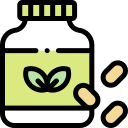Nosebleed: What do I need to Know?

- Nosebleed
- 17 Aug 2023
Overview
What is a Nosebleed?
Nosebleed is the bleeding or loss of blood from the inside of our nose. It can occur in one or both nostrils, but usually, it occurs in one nostril. Nose bleed may appear all of a sudden and may result from unnoticed factors. Nosebleed is common and rarely severe. Most nosebleed resolves with time or with proper self-care. Occasionally, a nosebleed can indicate a severe medical condition. Nosebleeds are more frequent in children below ten and older adults over 50.

Facts of nosebleed
- Nosebleed is one of the most common emergencies worldwide
- The medical terminology for nosebleed is epistaxis
- Around 60% of people have nosebleeds at some point in their lifetime
- Only 10% of cases are severe and need urgent medical attention
- Nose bleeds are rarely life-threatening 1Overview| Researched based study from Sciencedirect.com
Types
Types of Nosebleed
There are two types of nose bleed:
Anterior nosebleed
- Anterior nosebleed is bleeding from the front part of the nose
- It occurs due to the bursting of the blood vessel in the nasal septum, i.e., the cartilage and the bone that separates the two nostrils
- It is most common in children, usually not serious, and can be treated with home care
Posterior nosebleed
- A posterior nosebleed is bleeding from the back of the nose in the nasal cavity.
- It occurs due to bleeding of larger blood vessels at the backside of the nose near the throat area.
- Here the bleeding is heavier and can flow back to the throat.
- It is more common in adults and requires prompt medical attention 2Types| Researched based study from Nlm.nih.gov
Symptoms
Symptoms of Nosebleed
Symptom of anterior nosebleed
- Bleeding from one nostril
- Blood comes from the frontal part of the nose
Symptoms of posterior nosebleed
- Blood comes from both nostrils
- Blood flows back to the throat
- Unpleasant taste
- Nausea and vomiting 3Symptoms| Researched based study from Nlm.nih.gov
Causes
Causes of Nosebleed
Dry air
- The most common cause of nose bleeds is dry air. Artificial warming of the rooms with a heater or hot and humid climate can cause dry air.4Causes| Researched based study from Nlm.nih.gov
- Dry air causes the delicate tissue inside the nose to become cracked and crusty. Crusting irritates, and rubbing or picking with the hand can cause the nose to bleed.
Other common causes of nosebleed are:
- Cold air
- An injury such as a blow to the face
- Infections such as the common cold
- Allergy (swelling of the nasal lining)
- High altitude (air is drier at high altitude)
- Deviated nasal septum (the wall that separates two nostrils is slightly shifted from the midline and can cause bleeding)
- Frequent picking and blowing of the nose due to irritation
- Entering of foreign body in the nasal cavity
- Air travel (nasal blood vessels contract and expand and cause bleeding)
- Chemical irritants with strong odors
- Nasal sprays to treat runny and itchy nose (it might dry the nasal septum)
- Using blood thinning medication4Causes| Researched based study from Nlm.nih.gov
Less common causes of nosebleed:
- Nasal tumors
- Leukemia (blood cancer)
- Chemotherapy (drugs to treat cancer)
- Calcium deficiency 4Causes| Researched based study from Nlm.nih.gov
Diagnosis
Diagnosis of Nosebleed
The doctor (ENT specialist) will carry out a thorough physical examination to determine the cause. He will check the nose for any foreign body and investigate the family history and medical condition.
Further, he might order the following tests:
Complete blood count
- It is a blood test to detect any blood disorders.
Partial thromboplastin time
- It is a blood test to check for the blood clotting time.
Nasal endoscopy
- It is a procedure that uses a thin tube with a camera to look into the inside of the nasal cavity.
X-ray of the nose
- It is an imaging test that utilizes radiation to get a detailed picture of the sinuses(air-filled cavities near the nasal passage).
CT (Computed Tomography)-scan of the nose
- It is an imaging test that utilizes computers and X-rays to get a detailed picture of the sinuses.
- It can detect infection, swellings, and problems with the blood vessels 5Diagnosis| Researched based study from Sciencedirect.com
Risk
Who are at risk of getting Nosebleeds
- Pregnant woman
- People on blood thinning medication
- One with blood clotting disorders
- Who take cocaine and other illegal nasal drugs
- People with facial or nasal surgery
- One with atherosclerosis(fat build-up in the arteries)
- People with liver disease
- Who has cancer
- People with high blood pressure
- One with alcoholism(addicted to alcohol) 6Risk| Researched based study from Nlm.nih.gov
Treatment
Treatment of Nosebleed
Treatment of nosebleeds depends on the cause. Some standard treatment options are mentioned below:
Medication adjustment
- The doctor might reduce the dose of blood thinning medication.
- Moreover, new medication to control blood pressure and help blood clot, such as Tranexamic, might be prescribed
Nasal packing
- The doctor inserts nasal sponges into the nasal cavity to put pressure on the bleeding blood vessel.
- It reduces mucosal irritation and decreases bleeding
Cauterization
- It is a technique that uses heat energy or chemical substance viz; silver nitrate to close the bleeding blood vessel.
- The doctor uses local anesthesia to the nostril to numb the inside of the nose before starting the procedure.
Embolization
- The procedure uses tiny gelatin sponges to block the blood vessel.
- It is performed to control severe nosebleeds
Septal surgery
- It is the surgical procedure inside the nose to straighten the deviated nasal septum.
- It improves breathing and resolves bleeding issues.
Ligation
- It is a surgical operation that ties the end of bleeding blood vessels or arteries.
- Doctors recommend ligation procedures only when all other treatment options do not work 7Treatment| Researched based study from Nlm.nih.gov
Home remedies for nosebleeds
To stop bleeding, one must follow the following steps:
- Sit upright and squeeze the soft part of the nose with your thumb or index finger firmly and breathe through the mouth
- Slightly lean to prevent blood from entering into the sinuses and throat
- Sit straight so that the head is higher than the heart to reduce blood pressure and slow further bleeding
- Apply an ice compress on the bridge of the nose to slow the bleeding
- If available, spray over-the-counter decongestant viz; oxymetazoline onto the bleeding side of the nose to close the blood vessels and then apply the pressure to the nose. However, one must not use the topical sprays for more extended periods as it might increase the chance of nose bleed.
- Continue the above steps for around 5 minutes continuously before checking if the bleeding has stopped. If it is still bleeding, continue for another 10 minutes.
After the bleeding stops, avoid bending and blowing, or rubbing the nose for some days 8Treatment| Researched based study from Nlm.nih.gov
Prevention

Prevention of Nosebleed
- Complete cessation of smoking
- Avoiding frequent picking of the nose
- Avoiding hard blowing of the nose
- Opening of the mouth during sneezing
- Moisturizing the nose with a nasal spray
- Using humidifiers in the winter season to keep the air moist
- Applying tissue moisturizing ointment such as Vaseline to nostrils during bedtime
- Avoiding breathing chemicals by using a mask
- Wearing a seatbelt during travel to prevent facial injury
- Avoiding laborious activities after a nosebleed 9Prevention| Researched based study from Nlm.nih.gov
Medical emergency
Signs needing urgent medical attention
- Nose bleeding in people with blood thinning medication
- A child is nose bleeding and is under two years of age
- Bleeding very often
- Bleeding a lot and having trouble stopping the bleeding within 20 minutes
- Getting pale and tired after the nosebleed
- Nose bleeding with heart palpitation
- Nose bleeding starts after an injury or surgery
- Chest pain along with nose bleeding
- Breathing difficulty during a nosebleed
- Cherry red spots on the face and hand(a sign of hemorrhagic telangiectasia). Hemorrhagic telangiectasia is an inherited disease in which there is heavy nose bleeding.
- Nosebleed at the start of the new medication
- Nosebleed along with unusual bruising in the whole body 10Medical emergency| Researched based study from Nlm.nih.gov
Takeaway
Key Takeaways
- Nosebleeds are a common occurrence that is rarely serious
- A nosebleed can be due to various causes, such as physical, environmental, and medical conditions.
- Knowing the underlying cause helps better manage the nosebleed
- Adopting measures such as minimizing irritation and keeping the nose moist can help prevent nose bleeds
- One experiencing a posterior nosebleed must immediately consult a healthcare professional to get the correct on-time treatment
Any feedback on this article?
 This Articles content was accurate
This Articles content was accurate Very Informative Article
Very Informative Article I have a question or a comment
I have a question or a comment
 This article contains inaccurate content
This article contains inaccurate content This article was not helpful
This article was not helpful I have a question or a comment
I have a question or a comment
We appreciate your helpful feedback!
Checkout our social pages
References
-
Science Direct
Epistaxis | Overview
-
National Library of Medicine
Epistaxis | Types
-
National Library of Medicine
Epistaxis | Symptoms
-
National Library of Medicine
Epistaxis: A Common Problem | Causes
-
Science Direct
Epistaxis: Diagnosis and Treatment | Diagnosis
-
National Library of Medicine
Risk Factors and Management for Epistaxis in a Hospitalized Adult Sample | Risk
-
National Library of Medicine
Current Approaches to Epistaxis Treatment in Primary and Secondary Care | Treatment
-
National Library of Medicine
Use of Cryotherapy for Managing Epistaxis in the First Aid Setting: A Scoping Review | Treatment
-
National Library of Medicine
Clinical Practice Guideline: Nosebleed (Epistaxis) | Prevention
-
National Library of Medicine
Community-based management of epistaxis: Who bloody knows? | Medical emergency


































